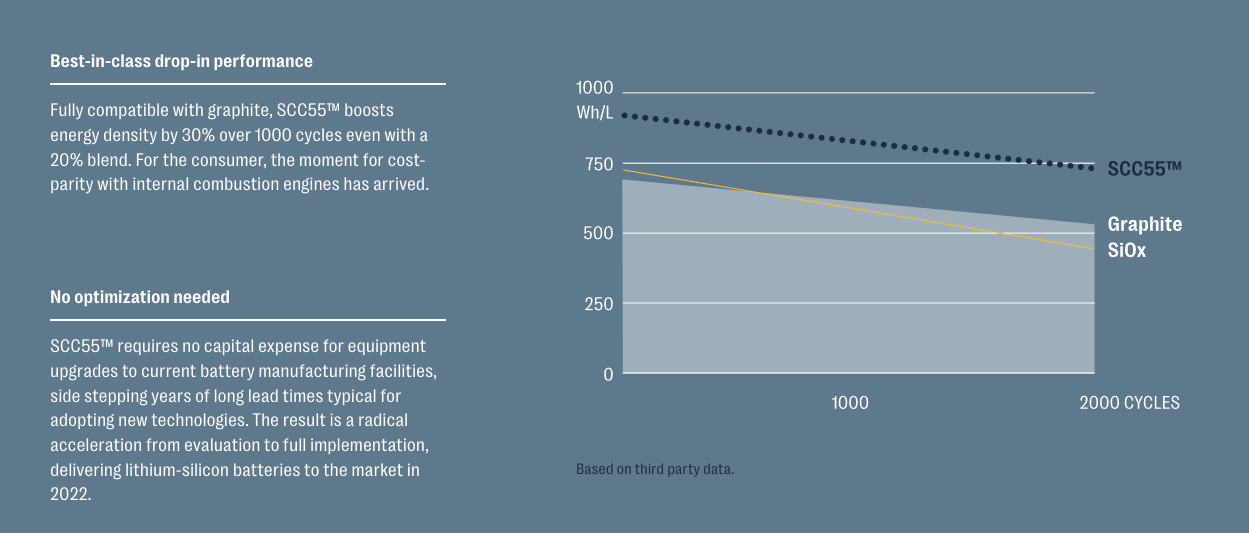Porsche Invests $400 Million Into Group14 Technologies, Silicon Batteries


The battery breakthroughs that will make the EV revolution possible are coming from places you never heard of. You know about QuantumScape and StoreDot, but what about Group14 Technologies? That’s a company that says it has found a way to make battery anodes using silicon.
Why it that a big deal? Because silicon anodes can store more energy than graphite electrodes. More energy density means faster charging, longer range, and lower costs. There must be something to what Group14 is doing because Porsche has just invested $400 million into the company. That will be used to build a new factory in central Washington that will produce enough silicon carbide anodes to power 600,000 electric cars a year. It is expected to be in operation by the end of 2023.
Others are working on silicon anodes but say they are years away from commercial production. Rick Luebbe, co-founder and CEO of Group14, tells Canary Media his company expects its first silicon-anode batteries to be fitted into electric cars as early as next year.
“Silicon batteries are here,” he says. “The technology is proven. Now it’s about scaling to meet the demand.” He is stoked about the new investment from Porsche. “They’re recognized as one of the technology leaders in the automotive industry. We’re really excited about that validation from the Porsche team.”
Silicon has one drawback that has stymied researchers until this point. It expands and contracts as the battery charges and discharges. Those fluctuations can damage the battery. The trick for companies, including Group14, is to harness the energy capacity of silicon while minimizing the damage it causes.
Group14’s recipe, dubbed SCC55, uses “hard carbon-based scaffolding” to keep that silicon “in the most ideal form – amorphous, nano-sized, and carbon-encased,” according to the company’s website. In other words, the silicon sits in a minuscule scaffolding structure where it has room to expand and contract without weakening the structure of the anode, Luebbe explained.
The company calls the process it uses to make the carbon scaffold Dryrolysis. It says it is “both an incredibly efficient and environmentally friendly approach to synthesizing carbon to create the perfect carbon scaffold. Highly scalable, this novel approach removes the need for solvent by combining dry polymerization with thermal processing. This platform yields the ideal carbon scaffold for a silicon-carbon composite — ideal for retaining amorphous, nano-sized silicon. Importantly, “Dryrolysis” is accomplished in a single step and in a single reactor.”
Once the scaffold is made, the next step is called “Siligenesis.” It is how Group14 makes the silicon anode material. “Creating both silicon and tuned internal void spaces within the carbon scaffolding, this novel approach employs a non-exotic precursor that converts into silicon within the porous carbon scaffold. Beyond providing for the ideal form of silicon, Siligenesis also supports silicon’s expansion and contraction within remaining intraparticle void spaces of the composite, further boosting electrochemical performance.”
Achieving an ideal anode requires years of complicated laboratory science. Group14 grew out of a company called EnerG2 that focused on nano-engineering synthetic carbons. That parent company was sold to BASF, and then Group14 was spun out in 2015 to apply that technological approach to silicon anodes.
Group14 doesn’t have the silicon anode field to itself. Sila Nanotechnologies has raised several hundred million dollars for its similar quest and Sionic Energy makes a silicon anode and a co-optimized electrolyte. It’s battery technology is being used in drones first, but it expects to get its anodes into vehicles by mid-decade.
“We’ll be the first ones in EVs,” Luebbe said. “But it’s going to take a lot of actors to transform an industry.” He declined to name which car model will be the first to market with silicon anodes but did say the Porsche investment came with a commitment to start making lithium-silicon batteries for its cars in 2024. And, of course, Porsche is part of Volkswagen Group, so everything it knows, the other members of the group know as well.
While everyone is gaga over solid-state batteries, the silicon anodes have one huge market advantage. They can be dropped into the lithium-ion battery manufacturing process with few changes to the the production process. Solid-state batteries could make billions of dollars worth of existing manufacturing infrastructure obsolete.
There are plenty of battery breakthrough stories out there, but few of them are backed by a $400 million bet from a major auto manufacturer.
Appreciate CleanTechnica’s originality and cleantech news coverage? Consider becoming a CleanTechnica Member, Supporter, Technician, or Ambassador — or a patron on Patreon.
Don’t want to miss a cleantech story? Sign up for daily news updates from CleanTechnica on email. Or follow us on Google News!
Have a tip for CleanTechnica, want to advertise, or want to suggest a guest for our CleanTech Talk podcast? Contact us here.



